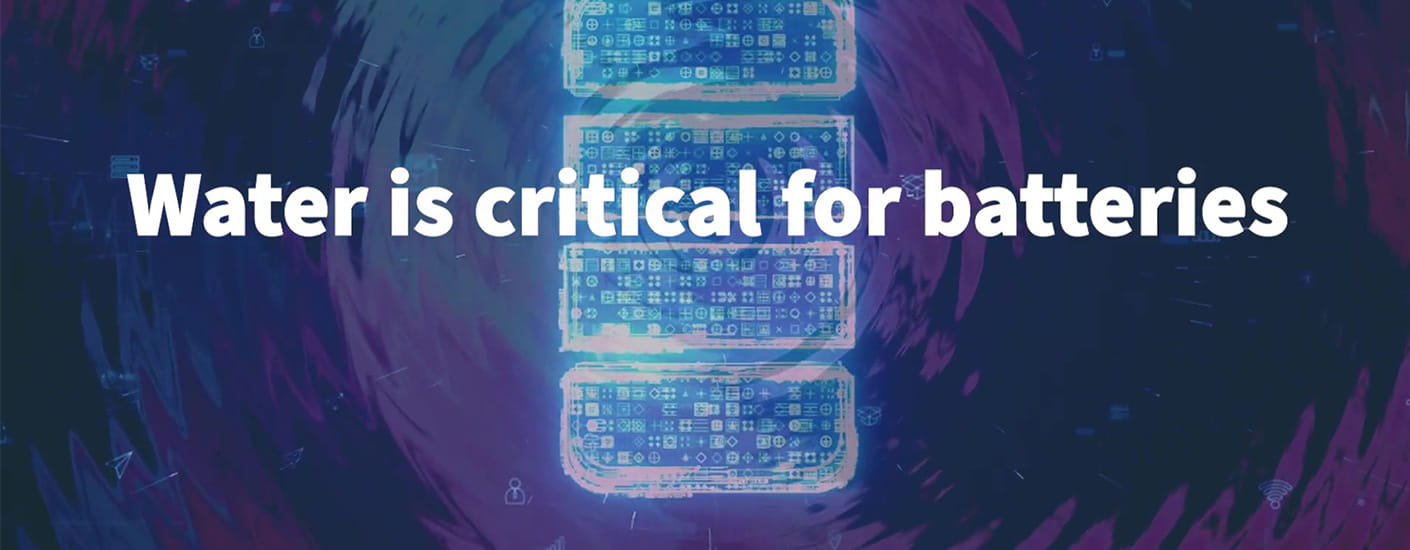Battery demand is predicted to grow by 12 times from 2020 to 2030.
To meet the rising demand for batteries for electric vehicles and for home and grid-scale energy storage systems, massive ‘Giga’ scale battery production plants are being built in several countries.
Battery recycling plants are also being built. Some companies are targeting 50 percent recycled materials in their batteries to minimize waste and ensure a circular economy.
But the world will still need millions of new batteries – and the natural resources to create them – to store clean energy and meet the goals of the Paris Agreement. And there’s one increasingly scarce resource that could present the greatest threat to these projections. Water. Batteries usually don’t need water to operate but, mining their constituent materials, refining, and then manufacturing requires quite a lot of water.
A wide range of minerals make up the batteries we use today, including lithium, manganese, cobalt, nickel, graphite, and silicon. Mining projects for each of these minerals require unique water management solutions relating to mineral extraction, processing, and tailings.
Take lithium for example. Lithium miners need to process around 30,000 liters of brine lake water to produce 10 kg of lithium. Replacing the world’s estimated ~1.5 billion conventional-fueled vehicles with electric vehicles will require around 15,000,000 tonnes of lithium. That’s a lot of brine to process!
Processing brine lake water and recovering lithium requires about the same amount of fresh water as well.
To make it even more complex, fresh water is typically scarce near inland brine lakes. Transporting water to these locations is often cost-prohibitive. We’re finding that lithium miners can overcome this scarcity by reusing water from municipal or industrial wastewater sources, and by recycling their own wastewater.
Lithium mine, Nevada, USA
To top it off, another 6 m3 of water is needed in the factory to process that same 10 kg of lithium into batteries for one electric car.
Battery production requires substantial water and wastewater management expertise too.
Luckily we’re here to help! We’re helping our clients across the globe both recover and refine the specialty battery minerals needed for production. We’re also supporting water management on many of these operations.
The chart below shows the various water and wastewater management components that go into battery production.
At battery manufacturing and recycling plants, we help our clients produce the high-purity deionized water needed for battery production. We are also treating the challenging wastewater streams for reuse, recovering the chemicals these waters contain, and ensuring our clients meet often stringent permit discharge limits.
Wastewater outputs throughout the battery manufacturing process.
Clearly, battery production requires a lot of high purity treated water but another challenge remains. How do you deal with the wastewater produced?
Wastewater produced during the battery manufacturing process
Different water sources need different preparations, but treatment always ends with a purification step. The high purity water that is required is often defined as having inorganics that are typically less than < 0.1 µS/cm, which is far purer than rainwater. The current trend is towards ultra-low organic carbon content (< 30 µg/L) and non detectable inorganics, typically requiring a conductivity of 0.055 µS/cm.
Creating such high purity deionized water at large scale requires specialized water treatment expertise. Some common processes are shown in the diagram below including membranes, carbon filtration (GAC), reverse osmosis, etc.
Battery manufacturing and recycling projects have many system considerations. Water is a significant consideration.
The project must identify water sources to provide the quantity needed. Non-traditional water supplies like reused process water are often considered. Reused process water can be sourced either within the battery plant or at a co-located industry. When batteries reach end-of-life, many of the valuable materials that make them up can be recovered and reused.
The projected growth in the batteries industry hinges on how we access, use, and dispose of water.
Water management can’t be an afterthought in our collective journey to store intermittent energy. There are enormous demands on our water resources. And these demands are growing.
Adapting a responsible approach to water stewardship means meeting sustainability commitments, ensuring efficiency, and reducing costs as well.
As always, we’re here to help you ‘waterproof’ your energy transition projects. Reach out today: WET@advisian.com







